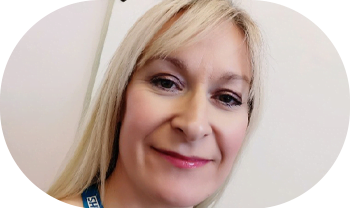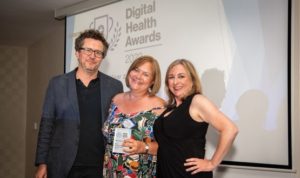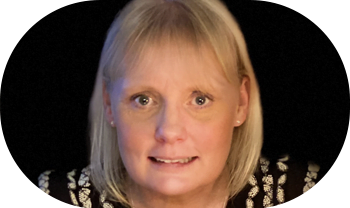 The CNIO role is often seen as a link between nurses working clinically and the IT department, but in my case it also involves being a link between two recently merged trusts covering acute and community services.
The CNIO role is often seen as a link between nurses working clinically and the IT department, but in my case it also involves being a link between two recently merged trusts covering acute and community services.
Differing approaches to informatics
The previous organisations had taken very different approaches to informatics. One had an electronic health record (EHR) used for all nursing documentation, with care planning having been completed electronically for around 20 years.
The other trust had a ‘best of breed’ style, using a number of smaller systems for specific tasks. Large parts of the nursing documentation, including care planning, had remained on paper.
The two organisations merged in April 2019, and a decision was made to implement the EHR across the entire trust. That implementation was relatively straightforward and on the whole was well received, but two large groups of nurses coming together to work on common documentation did highlight areas where work was required.
Care planning was the noticeable aspect where refinement was needed. The nurses who were new to electronic care planning spotted imperfections in the use of the system. Those who had used it for many years had often just learnt to work around those imperfections – but in so doing, it meant care planning wasn’t always as effective as it could be.
Simplifying documentation
For me, the care plan is the most important aspect of the nursing process. If we don’t have a plan our success is purely down to chance. If we don’t identify a goal or outcome how do we even know that we have succeeded? How can we compare the outcomes of our care with our peers, whether in the same organisation or beyond? Making sure the same care plans are used consistently helps reduce variation – everyone works to the same goals and the same outcomes, which improves patient care.
To make documentation and care planning work for nurses, and ultimately benefit patients, we need to make assessments and plans as easy to complete as possible. That includes using digital systems. As CNIO, I’m therefore currently undertaking a review of care planning across our trust.
The staff nurses who use the documentation on a regular basis are best placed to say what needs to be improved in the current system and to review and comment on suggested changes. On that basis I set up a project steering group with representatives from both hospital sites and a range of staff roles, including staff nurses in band 5 and 6 roles from a range of medical and surgical specialties, ward managers, matrons and IT.
The three key areas for improvement
The group met to debate experiences of using electronic care plans. It became clear there were three key areas for improvement:
- How we use the electronic care planning system. Traditionally, we have used our care planning system to record and evaluate whether standards of care – support with hygiene, for instance – has been delivered. That’s meant nurses have had much less time to actually use the care plan functionality, and means we’ve never used the software’s ability to evaluate a patient’s care against a care plan.
- The number of plans. We currently have 150 care plans. Some are automatically digitally activated for a patient but, if a nurse needs to add an additional plan, he or she has to search through the full list of plans. You either have to scroll through to try and find the one you need, but the names aren’t always as clear as they might be, or search. While nurses who have used the system for a while have got used to these imperfections, those who are new to the system pointed out that this was really challenging.
- Training. It was felt specific training should be offered to nurses to make sure they were comfortable with how the digital care planning setup worked, as well with the general clinical practice around care planning.
I have also connected with fellow CNIOs and digital nurses to discuss the care planning. Via the Digital Health CNIO Network Discourse, I’ve understood that this planning is challenging for many nurses, regardless of whether a digital of a paper-based system is used. The issue is often one of time. I can therefore see that while digital working can help, there is also a practice issue – and that, as CNIO, I may need to look beyond the informatics element to truly transform care planning in the trust.
The organisation currently has around 150 separate care plans. Even though these can be completed digitally, there are so many that it is difficult for nurses to select between them and know the right one to use in the right situation. Our steering group has now identified around 30 subjects on which we think we need to focus plans, and we have ‘subject experts’ working on these.
We have also reviewed a different process for evaluating care plans within our EHR. This will place a greater emphasis on evaluating the care that has been given against the care that has been planned. There is the ability to do this within the care planning software, but we’ve nor previously used it. My plan is to pilot using it across a couple of wards to see if we might be introduce its use consistently.
What has been really important to my work so far on this project has been having the support and direction from the senior nursing, midwifery and allied health professional team. Around the time the trust merged, I was working as a nurse consultant in an operational role and giving what other time I had to the CNIO role. At that point, the CNIO reported into the IT team.
The benefits
The merger made the CNIO role more important still and so, with agreement, it moved to be part of the trust’s corporate senior nursing team reporting directly to the director of nursing. This meant I could support the team in understanding the importance of digital nursing, and the opportunities it provides, but also that I could understand the nursing priorities for the organisation. The team also offers me real support in implementing changes, like those to care planning.
The shared decision making approach with the steering group has also been very important. Feedback of clinical staff as the end users of the technology has led to some excellent and well received improvements in our electronic health record. I remember one particular example when we’d introduced an assessment for patients who were at risk of self-harm or falls and needed one to one nursing care, or to be in a bay where a nurse was always present. The idea was that, on a two-hourly basis, staff would record what support and interactions had been provided.
In conversations with teams, we heard that these assessments were typically completed by healthcare assistants – and clashed with the intentional care rounds they were completing. So we moved the document in the EHR so it sat within the care round checklists. By doing that, we moved from 20-30% completion of the assessment to around 90%.
We are fortunate that our EHR can be adapted to the way in which we work: we don’t just have to use a one-size-fits all, off the shelf setup. We can build and edit documents and assessments in a way that we find useful. The shared decision making process will help ensure that any changes we make to the digital care planning process enable nurses to provide good quality, safe care, in an efficient and secure way.
About the author: Melanie Robertson is chief nursing informatics officer and cancer lead clinician at South Tyneside and Sunderland NHS Foundation Trust. She initially took on CNIO responsibilities in 2018, reporting to the IT team. In February 2020, the role moved to report to the director of nursing. Melanie has been a registered nurse since 1994.


